Discover our business units
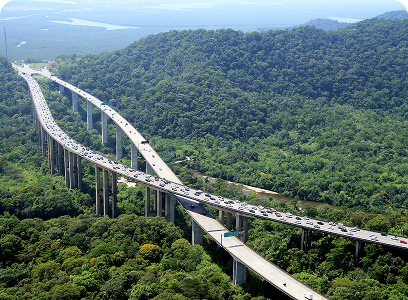

Ecovias Imigrantes
Operates the Anchieta-Imigrantes System (SAI), which connects the metropolitan region of São Paulo to the Port of Santos, the largest in Latin America, the Cubatão Petrochemical Complex, the plants in the ABCD region and the beaches of the Baixada Santista region. Spanning 176.8 kilometers, SAI is one of Brazil’s main touristic and export corridors.
Access website
Ecovias Raposo Castello
Manages highway segments in the São Paulo Metropolitan Region, including the main access routes to the capital via highways SP-270 (Raposo Tavares), SP-280 (Castello Branco), and SP-029. This network is a major route for distributing a wide range of diverse agricultural and industrial products, covering 10 cities in the state of São Paulo.
Access website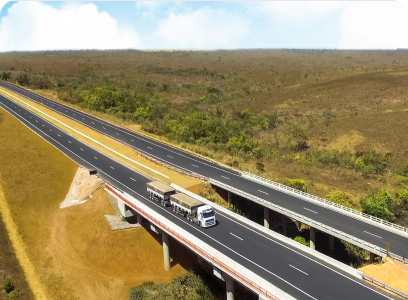

Ecovias Minas Goiás
It manages 436.6 kilometers of the BR-050 highway, a stretch that runs through nine towns in the states of Goiás and Minas Gerais. The concession includes one of the main corridors connecting the Federal District and São Paulo, which has been undergoing major structural transformation and will receive investments of R$3 billion by the end of its 30-year concession period.
Access website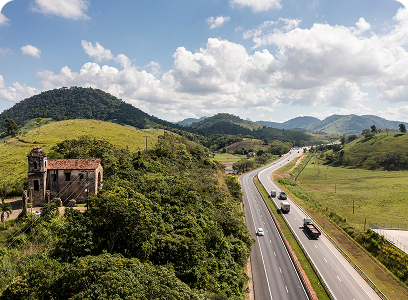

Ecovias 101
Operates 475.9 kilometers of the BR-101 highway in Espírito Santo, a stretch that comprises more than 20 towns, from Mucuri in Bahia to the border with Rio de Janeiro. The highway concession offers access to five important ports: Vitória and Tubarão, in Vitória, Espírito Santo; Barra do Riacho in Aracruz, Espírito Santo; Açu in Rio de Janeiro; and Ilhéus in Bahia. It is also an important access to the beaches of Espírito Santo, such as Guarapari and Vila Velha, which welcome thousands of tourists throughout the year.
Access website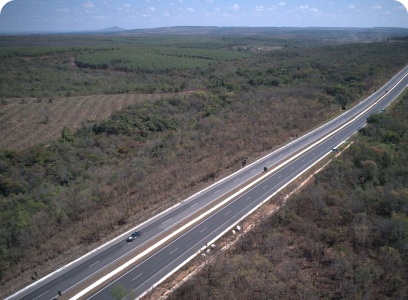

Ecovias Norte Minas
Manages stretches of the BR-135, MG-231 and LMG-754 highways, totaling 363.95 kilometers in length, between Curvelo and Montes Claros in Minas Gerais. It is an important highway that is part of the main corridor connecting the Southeastern, Southern and Northeastern regions.
Access website

Ecovias Rio Minas
Manages 726.9 kilometers of the Rio de Janeiro – Governador Valadares highway corridor, an important link between the country’s Southern and Northeastern regions. Over the 30-year concession period, Ecovias Rio Minas will execute constructions that include 303 kilometers of expansion to four lanes, 255 kilometers of additional lanes, 85 kilometers of frontage roads and 1.5 kilometers of bicycle paths. The concession agreement also stipulates the construction of 75 pedestrian overpasses, 462 bus stops, 154 infrastructure components, including interchanges, overpasses, underpasses, accesses and turnarounds, as well as two rest areas for truck drivers.
Access website

Ecovias Sul
Operates one of Brazil’s largest highway systems – the Pelotas highway complex, which consists of 457.3 kilometers of federal highways. The concession encompasses stretches that are important for the country’s economy, such as the Mercosur corridor (BR-116), and receives heavy traffic of cargo vehicles heading to the Port of Rio Grande. It is also the main access route for Uruguayan and Argentine tourists to Brazilian beaches.
Access website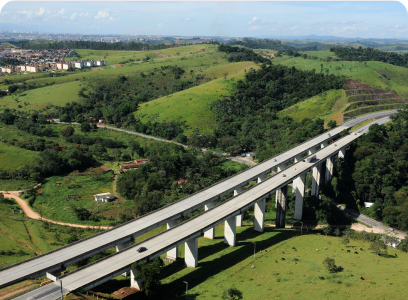

Ecovias Leste Paulista
Manages the Ayrton Senna / Carvalho Pinto corridor, which connects the metropolitan region of São Paulo to the Vale do Paraíba region, the hills of Campos de Jordão, the industrial hub of São José dos Campos and the beaches on the northern coast of São Paulo. Spanning 143.8 kilometers, it is one of the most important corridors for transporting the industrial production from companies in Vale do Paraíba, especially in the automotive and steel sectors.
Access website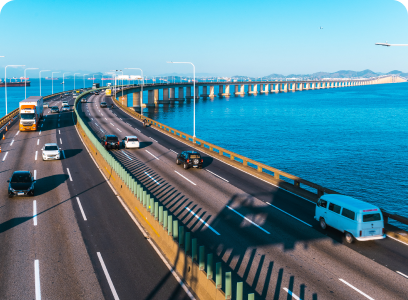

Ecovias Ponte
Manages the Presidente Costa e Silva Bridge, better known as the Rio-Niterói Bridge, one of Rio de Janeiro’s most famous landmarks. The concessionaire manages a stretch of 23.4 kilometers, including over 13 kilometers of the bridge and all access roads. It is the main connection between the city of Rio de Janeiro, the Lagos region and the state’s northern coast.
Access website

Ecovias Araguaia
Responsible for 851 kilometers of the BR-153 TO-GO and BR-080/414 GO highways, the concessionaire began operating the stretch in April 2022. The concession covers the stretch between Aliança do Tocantins in Tocantins and Anápolis in Goiás, and is one of the main connections between the Mid-North and Center-South regions of Brazil.
Access website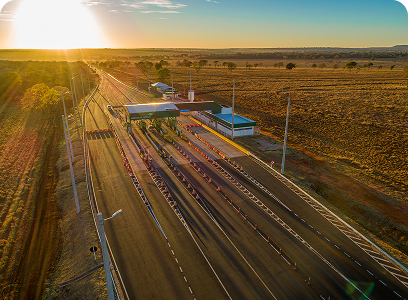

Ecovias Cerrado
Manages a stretch of 437 kilometers of the BR-364 and BR-365 highways between Uberlândia, the main city in the Triângulo Mineiro region, and Jataí in Goiás state. The highway concession is an important transport corridor connecting producers in the Midwestern region and consumers in the Southeastern region and the Port of Santos.
Access website
Ecovias Noroeste Paulista
Operating in the Northwest of the State of São Paulo, it begins its operation managing 442 kilometers of sections of the SP-310, SP-326 and SP-333 highways – an important logistics corridor for the transport of agricultural products and fertilizers. From 2025 onwards, Ecovias Noroeste Paulista will take on new stretches in the region, totaling 600 kilometers under expedition management.
Access website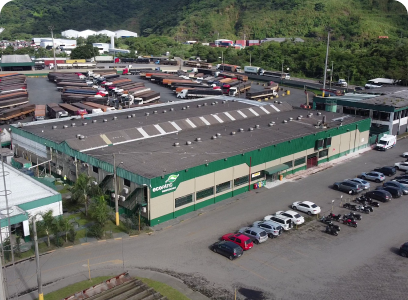
Ecopátio
Located in Cubatão in the coastal south region, it is considered the main regulatory yard for trucks at the Port of Santos. Its operational area spans 433,000 m2, of which 325,000 m2 are dedicated to receiving cargo vehicles accessing the port. It also provides empty container storage (DEPOT), special export customs clearance (REDEX) and general warehousing services.
Access website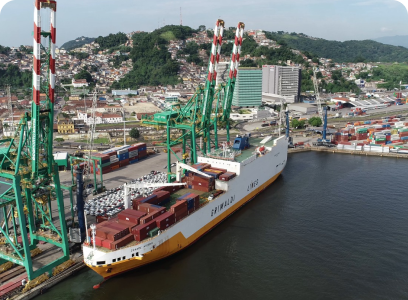

Ecoporto
Its activities include port operations and the handling and storage of export cargo at the Port of Santos. It is located in a privileged spot near downtown Santos, with easy access to the Imigrantes highway.
Access website